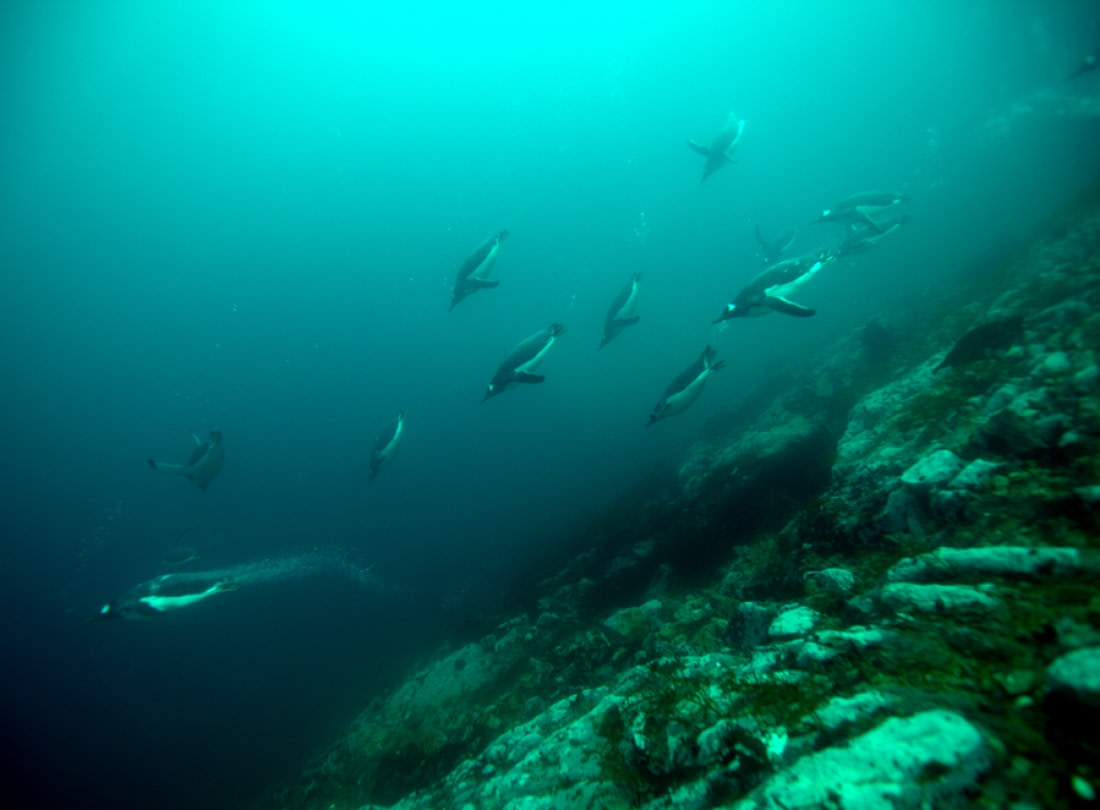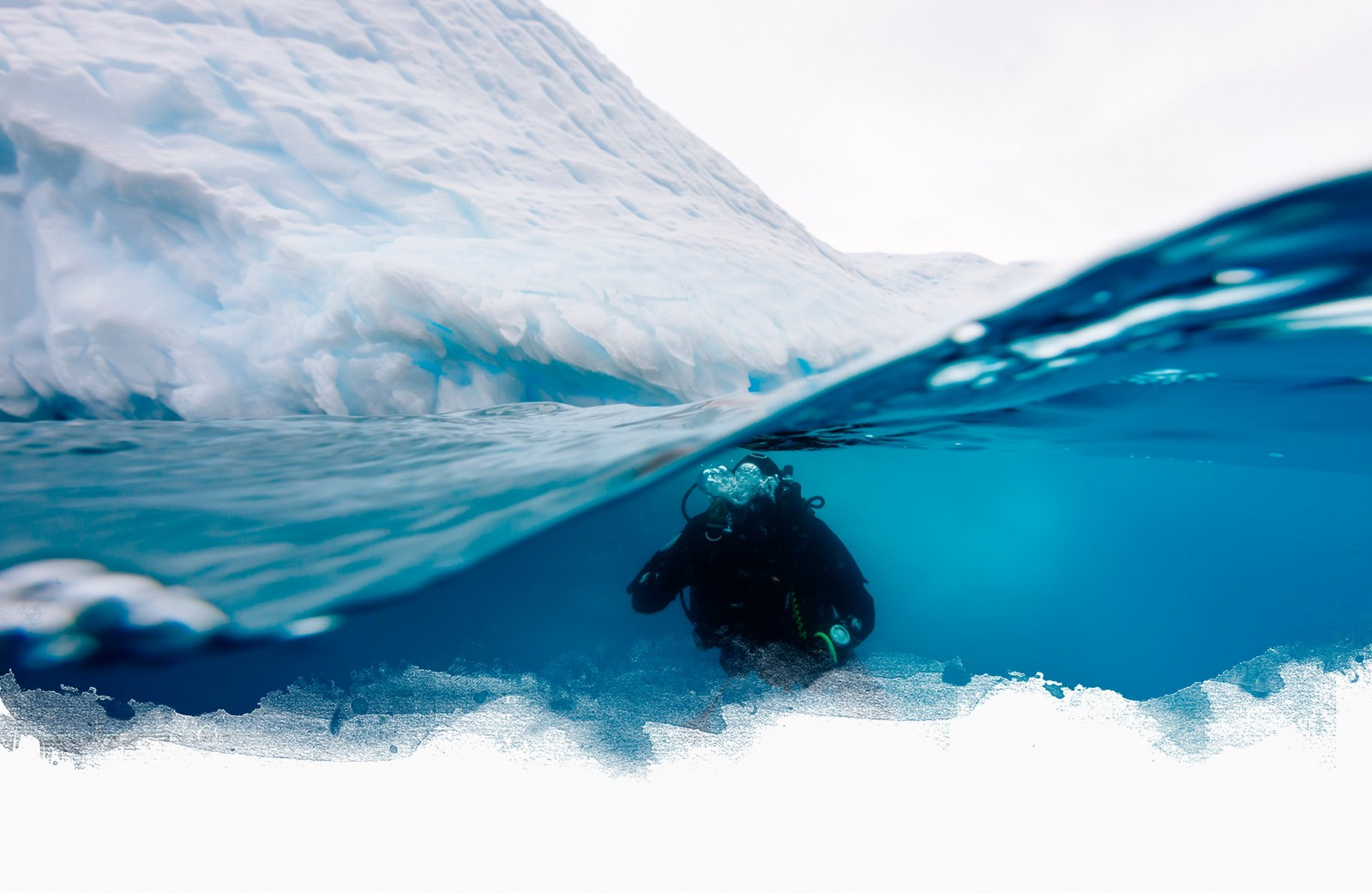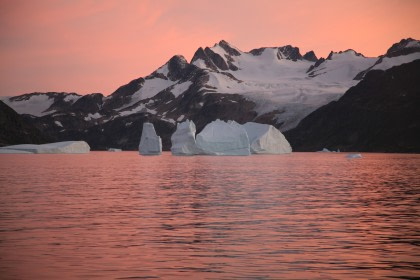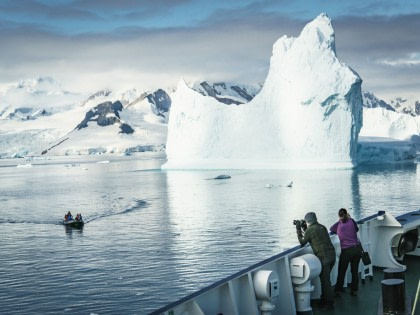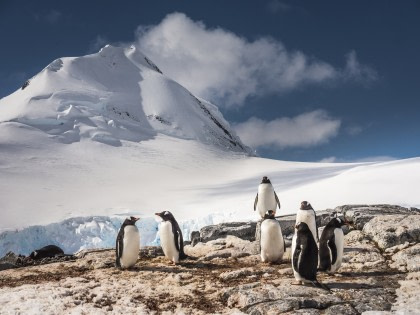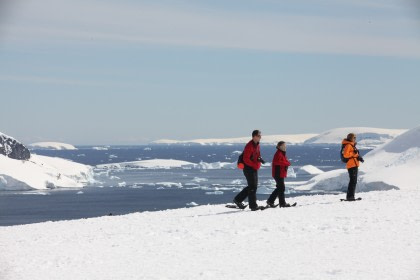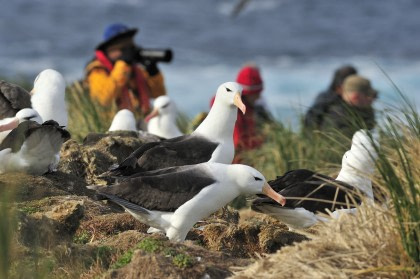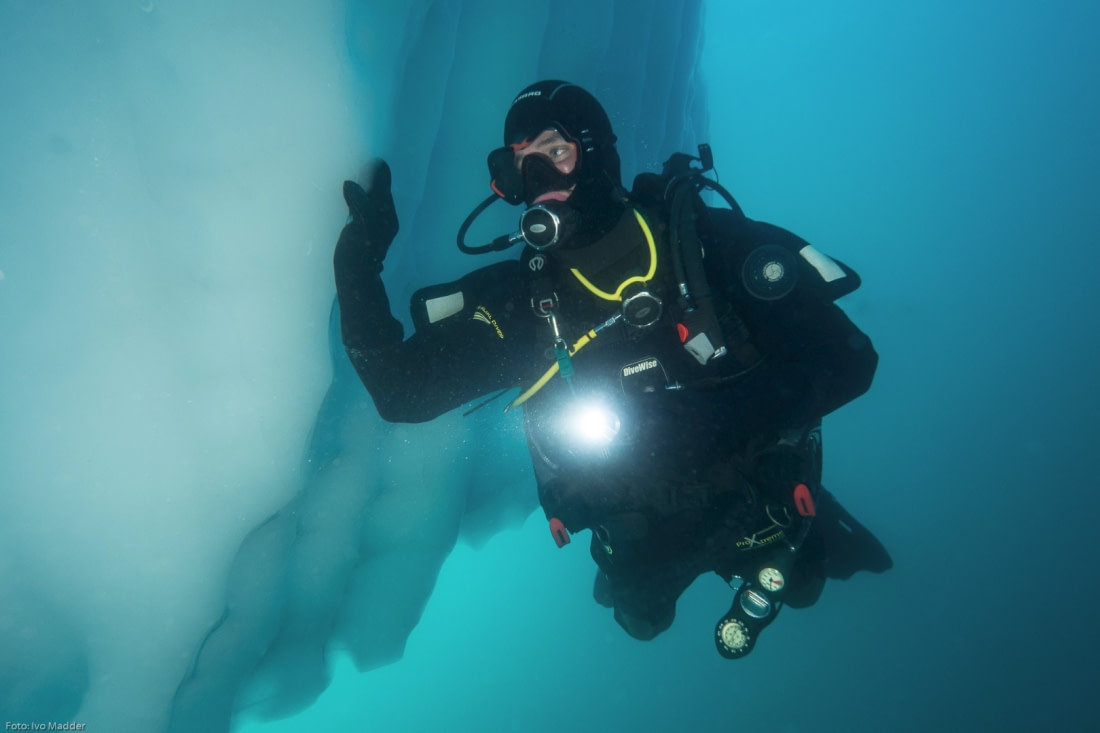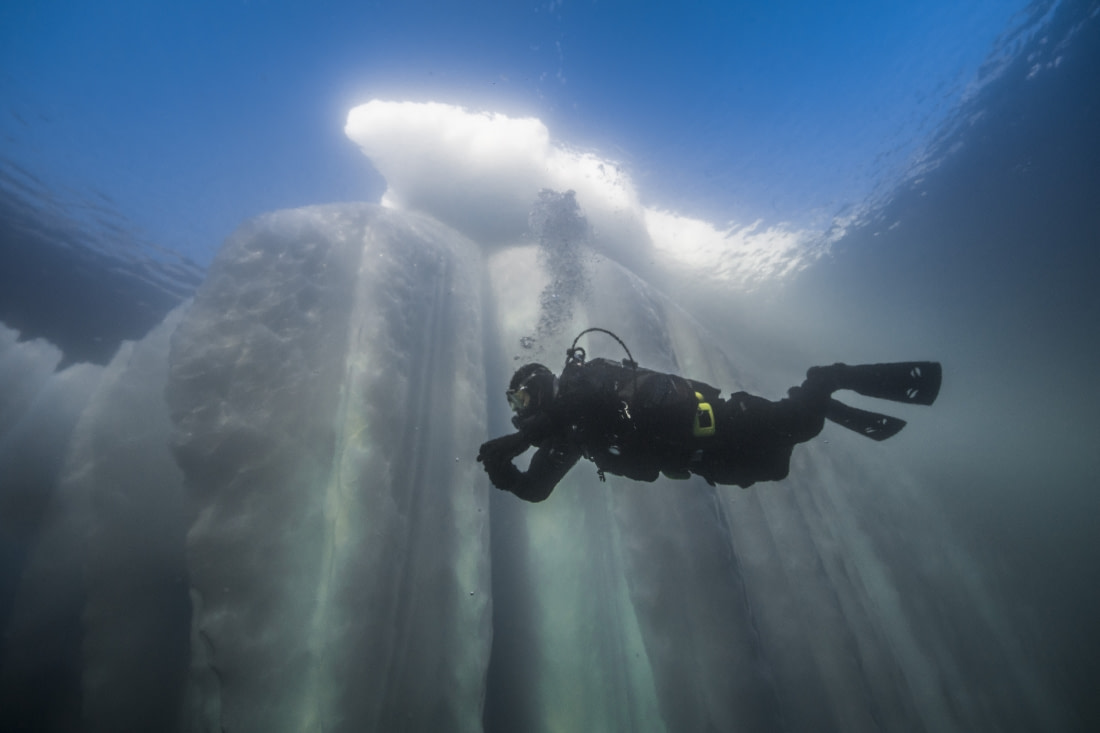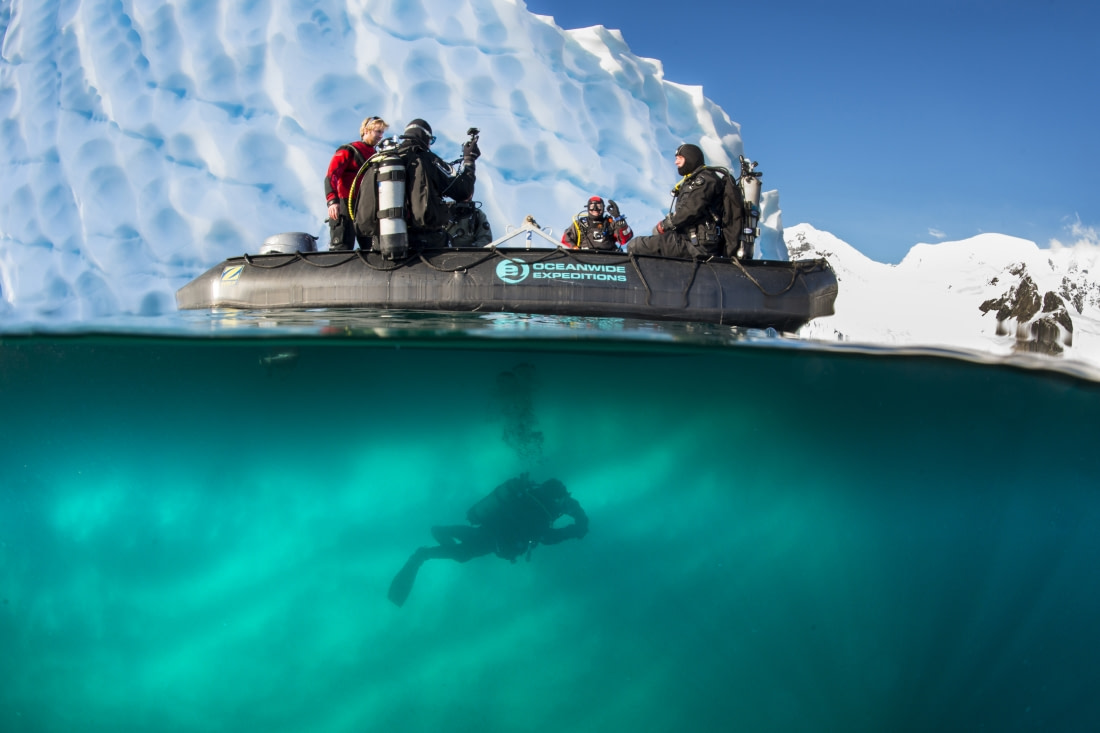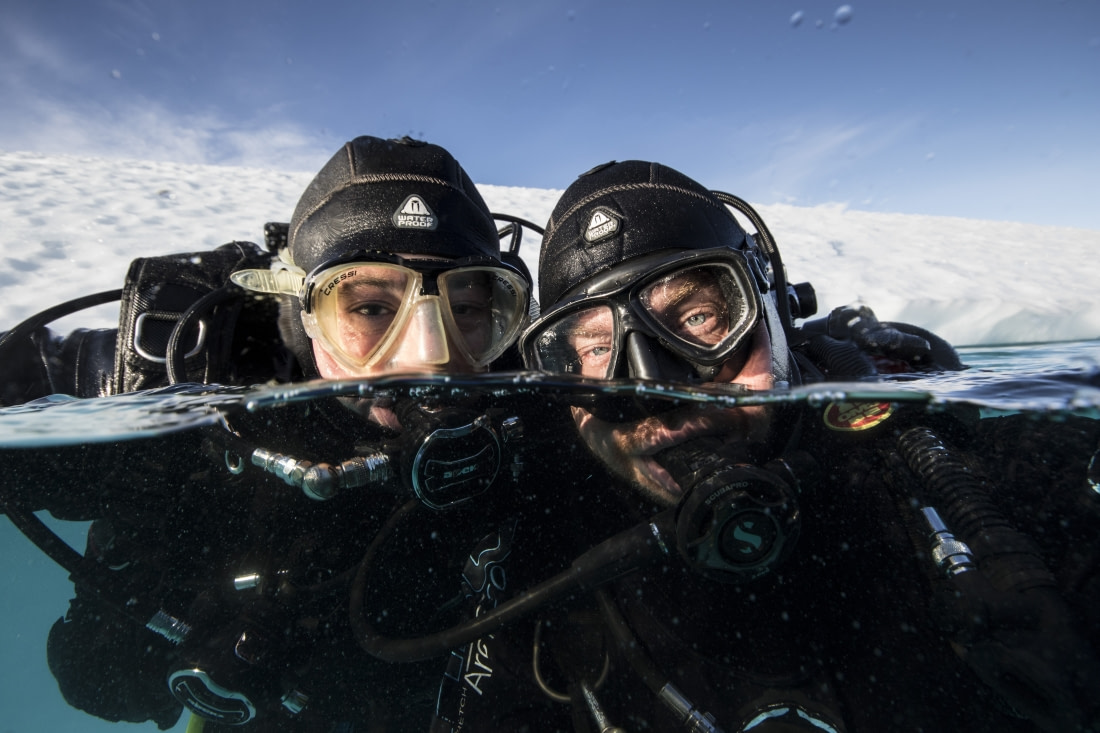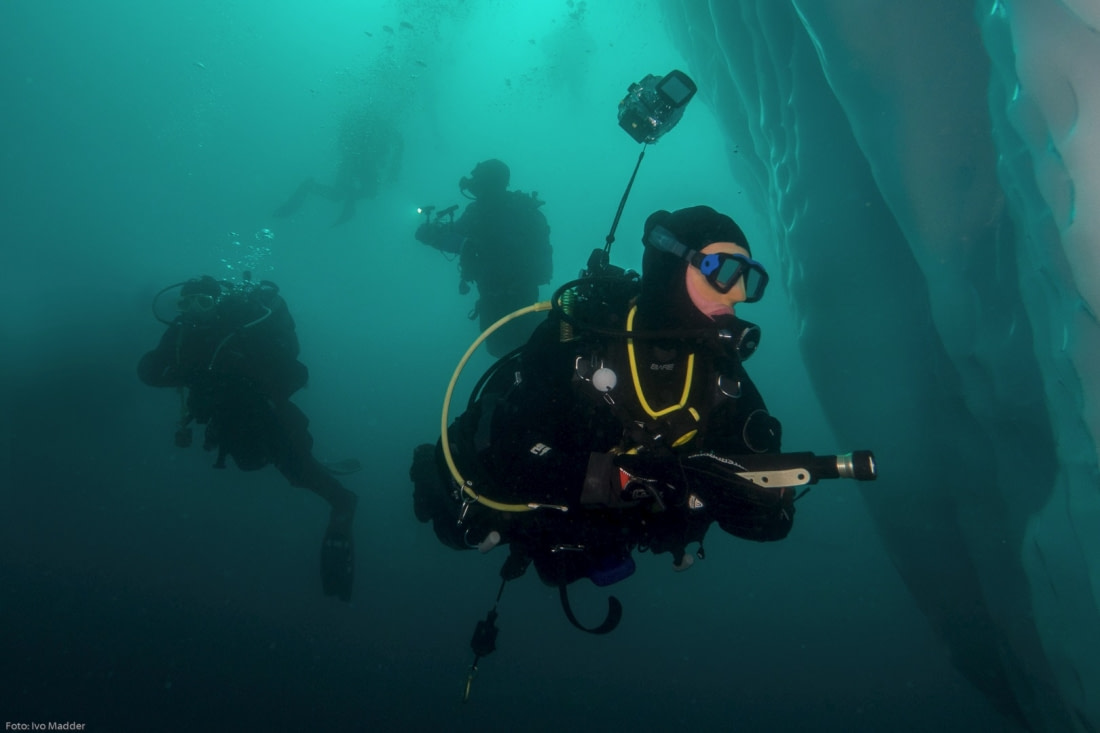Scuba diving trips in Antarctica and the Arctic
All of our polar voyages provide you maximum firsthand contact with local wildlife and terrain, but it is our intimate knowledge of the seas that allows us to also give you an unparalleled adventure below the waves.
Join us on one of our Arctic or Antarctic diving cruises, true expeditions in every sense of the word, during which you will have access to some of the most scenic dive sites in the polar regions.
With this exciting activity, you can explore the underbellies of icebergs, encounter exotic marine life, and enjoy the beautiful interplay of ice, light, and water in a rarely seen world.
The details of our dives and itineraries are based on the extensive experience of our international guides, all of whom have worked in the polar regions for many years in various capacities.
When you dive with us, you get the best polar adventure in the most capable hands.
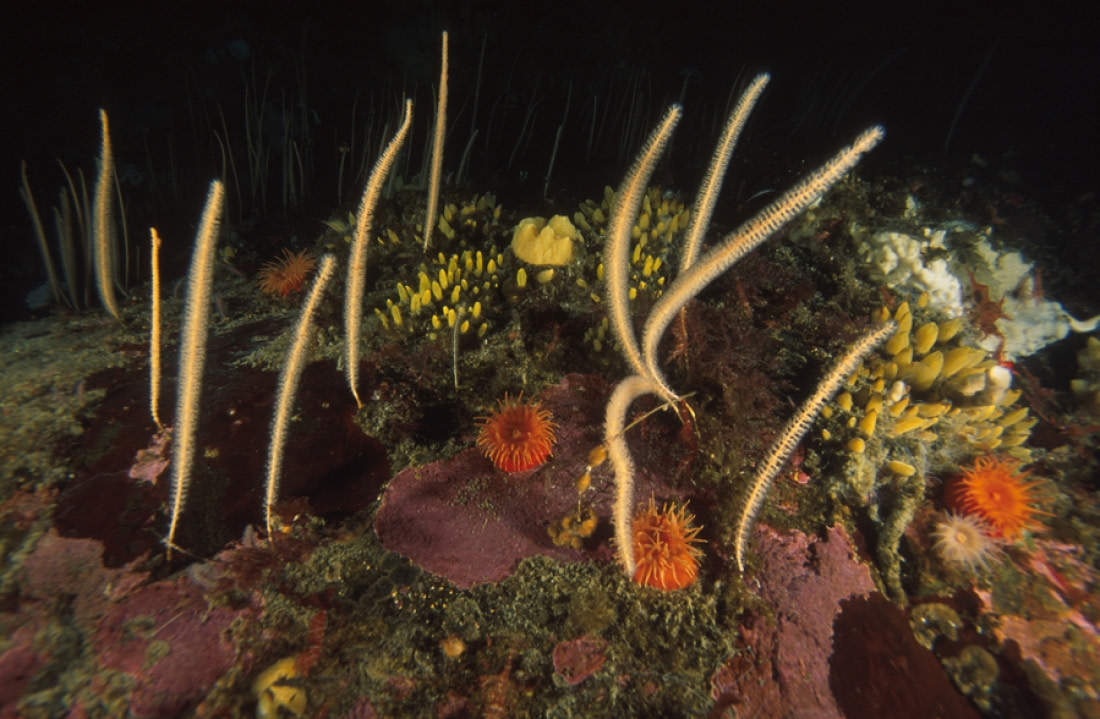
General information on our diving activity
- Divers must be experienced with cold-water, dry-suit diving.
- We aim for one to two dives per day (one in the morning, one in the afternoon).
- Our ability to dive depends on local ice and weather conditions.
- All dive guides are certified and experienced experts in their field.
- We offer basic equipment on board (e.g., tanks, compressors, and weights), but divers must bring their own personal gear.
- We make dives from our Zodiac boats.
- Our maximum dive depth is around 20 meters / 65 feet.
- In both Antarctica and the Arctic, we may observe sea squirts, squat lobsters, spider crabs, soft corals, anemones, peacock worms, dogfish, sea snails, crabs, sea butterflies, shrubby horsetails, jellyfish, sea hedgehogs, kelp walls, and several species of starfish.
- Details on booking this activity can be found on our Dates & Rates webpage.
ARCTIC DIVE PROGRAM
(Spitsbergen & Greenland)
The farthest reaches of the far north are home to some of the world’s most iconic wildlife, of which polar bears and Arctic foxes are just a part. On our Arctic dive program, you can encounter not only wondrous sea life but beautiful ice formations that truly distinguish this region from Antarctica.
We make shallow dives that explore near or under ice floes (about nine meters, or 30 feet deep) as well as deeper shoreline dives (nine to 18 meters, or 30 to 60 feet deep).
In the Arctic, we may also encounter seals, sea lions, and walruses. When these beloved animals are close to the Zodiacs, we may try to observe them underwater using snorkels and masks. But because of the possible danger, we cannot dive with walruses.
ANTARCTIC DIVE PROGRAM
(Antarctic Peninsula, Falkland Islands, & South Georgia)
Antarctica’s dazzling icecaps, colossal glaciers, and towering mountains are rivaled only by the white-sand beaches and lush flora of the sub-Antarctic islands. Both areas host a large variety of penguins, whales, seals, and seabirds.
Our Antarctic dive program is similar to our Arctic program. We dive from our Zodiacs, exploring ice walls, marine life, and sometimes shipwrecks at shallow depths (around 20 meters / 65 feet).
During these dives, you may observe penguins, fur seals, and perhaps even leopard seals. Many of the sub-Antarctic islands are also rich with krill, one of the prime food sources for many marine species and therefore highly useful in locating wildlife.
Weather in the polar regions
Arctic voyages are organized during the Northern Hemisphere summer (May to September), when the weather is milder. During this period, the sun shines 24 hours per day and temperatures often range between 5 to 15°C (41 to 59°F).
In Antarctica’s Southern Hemisphere summer (December to February), temperatures are generally close to freezing, varying between -5 to 8°C (23 to 46°F). Combined with the strong katabatic winds of this area, the cold can often feel even colder.
Warm and waterproof clothing (and a flexible attitude) is required for both regions, especially Antarctica. Severe weather may lead to the cancellation of landings and dives, as excursions can only take place in safe conditions.
Program changes due to weather and ice
We know our dive destinations in great detail and are always exploring new sites, but every dive can encounter surprises. It is important to remember that nature calls the shots in the polar regions. Personal expectations that are not met are not grounds for reimbursement.
Please note that our itinerary is always subject to safe local conditions. It is always possible that ice, weather, or wildlife will force us to change our sailing schedule. It is also possible that certain bays or fjords will be closed because of ice.
In such cases, we always have planned alternatives. But again, these alternatives are not grounds for reimbursement. When changing the itinerary, we assure you that the captain, expedition leader, and dive leader will do their utmost to provide you an equally good replacement program.
Dive experience and qualifications
Our polar dive voyages are not for beginners. They are meant for experienced divers who are familiar with cold-water, dry-suit diving. You must have logged at least 30 dry-suit dives to participate.
Before departure, please present an internationally accepted diving certificate and logbook. Also, we ask that you include copies when completing your diver personal information form.
The first dive of our voyage will be a “check dive” to try out your gear and assure our dive leader that you have enough experience to participate. This is for your safety and that of our guides.
If our dive leaders feel that any diver does not meet the necessary experience, they can exclude that diver from the dive program. In this event, Oceanwide Expeditions cannot be held responsible and will grant no claims for reimbursement.
All divers are required to follow the instructions of dive leaders and guides at all times. All divers are participating 100% at their own risk, which is also the case during land excursions.
Expedition team, excursions, & dive leaders
Our expedition team consists of one expedition leader and multiple guide-lecturers. All members of the team are extensively experienced in working in the polar wilderness.
Every morning after breakfast, you will be informed of the day’s program (position of the vessel, general information about the area, itinerary, and expected wildlife during the excursions). The excursions will then be evaluated in the afternoon and after dinner.
Video by Alan Keller
Occasionally, the expedition team will organize lectures, sometimes supported with slide shows, to inform the passengers about various features of the polar environment.
Our dive leaders are highly experienced instructors assisted by one or two dive guides. The main language of all guides and dive operations is English unless otherwise stated.
Special note: Safety first
Diving in the remote polar regions is no more dangerous than normal scuba diving as long as you follow one important rule: safety first.
All divers looking for dangerous stunts or deep dives are asked to refrain from this activity. There are no decompression chambers in Antarctica or the Arctic, medical care is almost non-existent, and there is hardly any infrastructure. Although we have a doctor on board the vessel for first-aid assistance, we cannot accept risky ventures from any divers.
DIVE PROCEDURES
Approach to dive site
In normal circumstances, the number of divers per Zodiac is six passengers as well as one driver-guide. Always watch your valuable gear when embarking and disembarking the Zodiacs. Oceanwide is not liable for the loss of individual equipment.
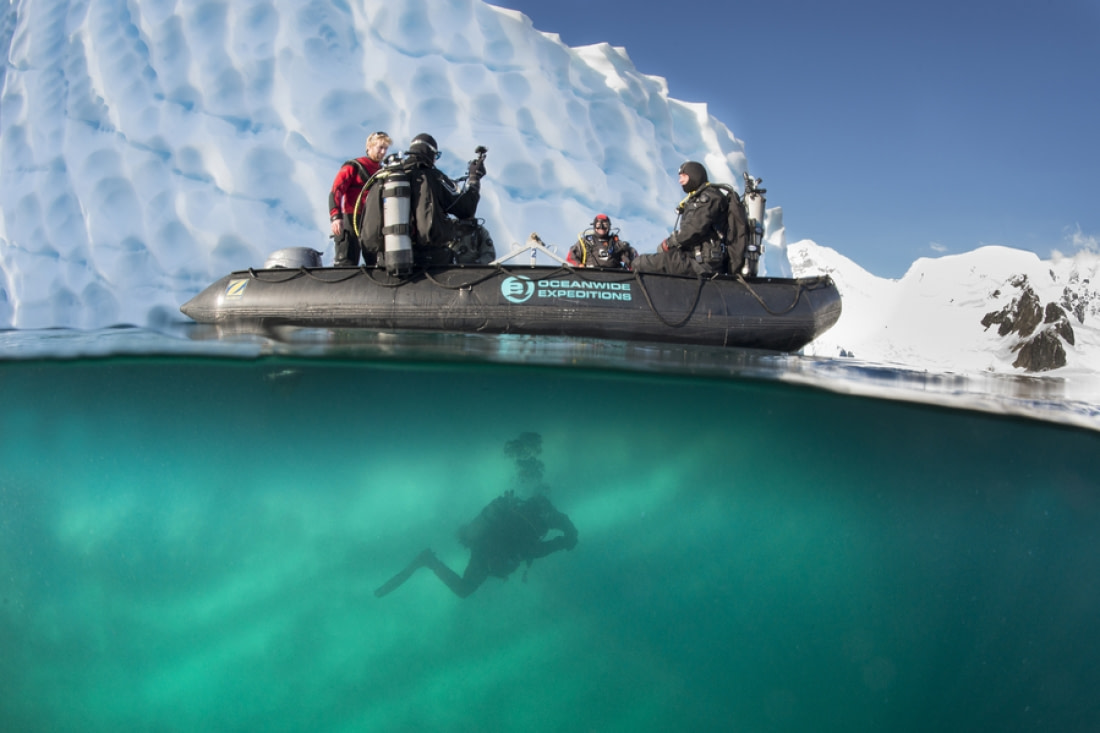
Check dive
The voyage starts with a check dive so that all divers can get used to the cold water, try out their equipment, and determine the weights they need. Before each dive, there will be a briefing about the dive site, weather and ice conditions, and the procedure of the dive.
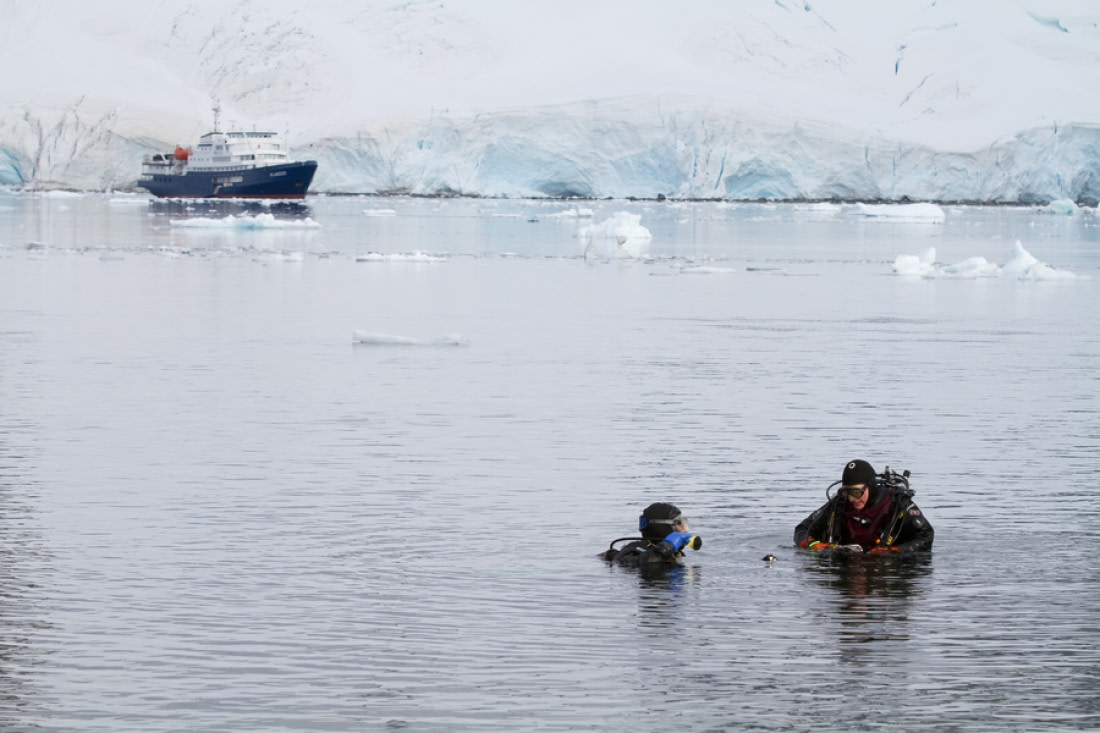
Currents
Water currents can be present anywhere and at any time. The dive guides will select a dive spot that is safe and also give information about returning to the Zodiacs if needed. Normally there is very little current where we dive, if any.
Dive buddy
Dives will be made using the buddy system. The dive guide will not be in the water to accompany and lead divers. Rather, dive guides stay on the surface for the divers’ safety. Divers are expected to be experienced enough to read their compasses and depth gauges and look after each other. Buddy teams are important, so we let our divers match themselves as much as possible. In cases where divers have not paired up or are in doubt, dive guides sit with divers to discuss their expectations and experience. We try to pair people of similar interests and experience. If there is an uneven number of divers and three-person groups are not feasible, dive guides will accompany divers.
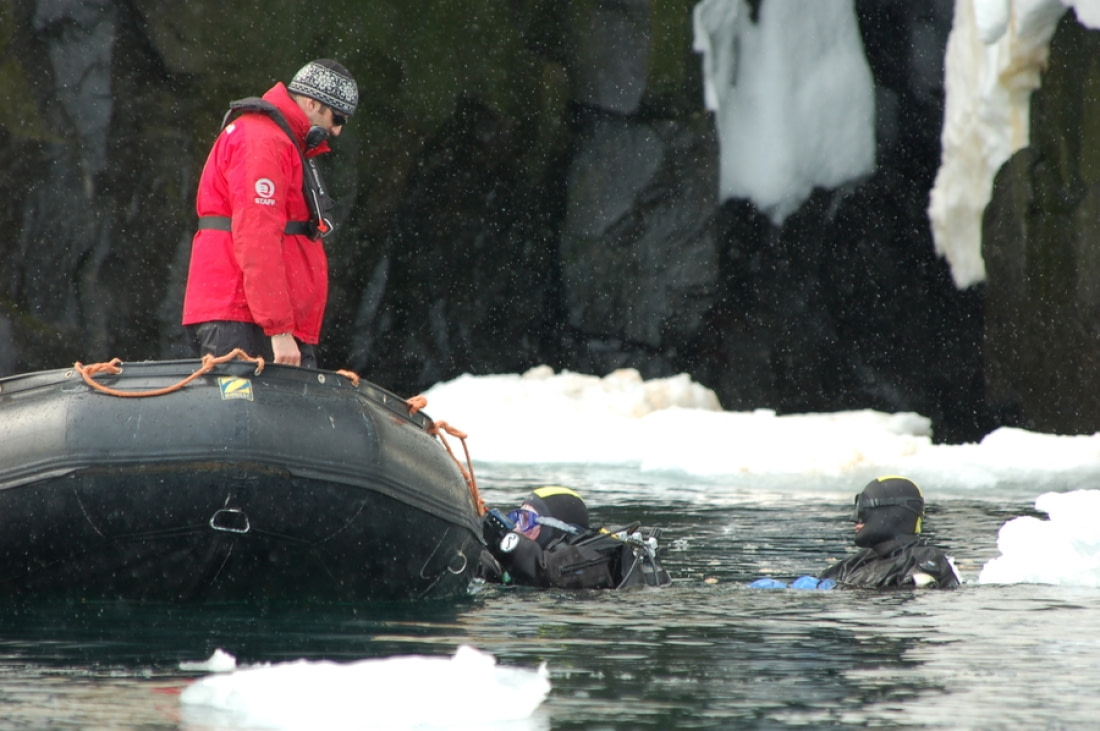
Dive guide-to-diver ratio
Our programs allow for six divers per dive guide, with a preferred maximum of 24 diving passengers per voyage. Groups larger than 24 will need to split dive activities, and we also may reduce the number of dives so that we can safely manage activities.
Drifting pack ice
This is a real hazard. If pack ice approaches while divers are underwater, it can be hard to see people if they surface in the middle of it. For this reason, it is important to only dive around icebergs that are hard aground or floating in water clear of brash or pack ice. Many of the dive sites have slopes or faces that go deeper than the 20 meters (65 feet) maximum limit for our dives. Divers must act responsibly and show self-discipline.
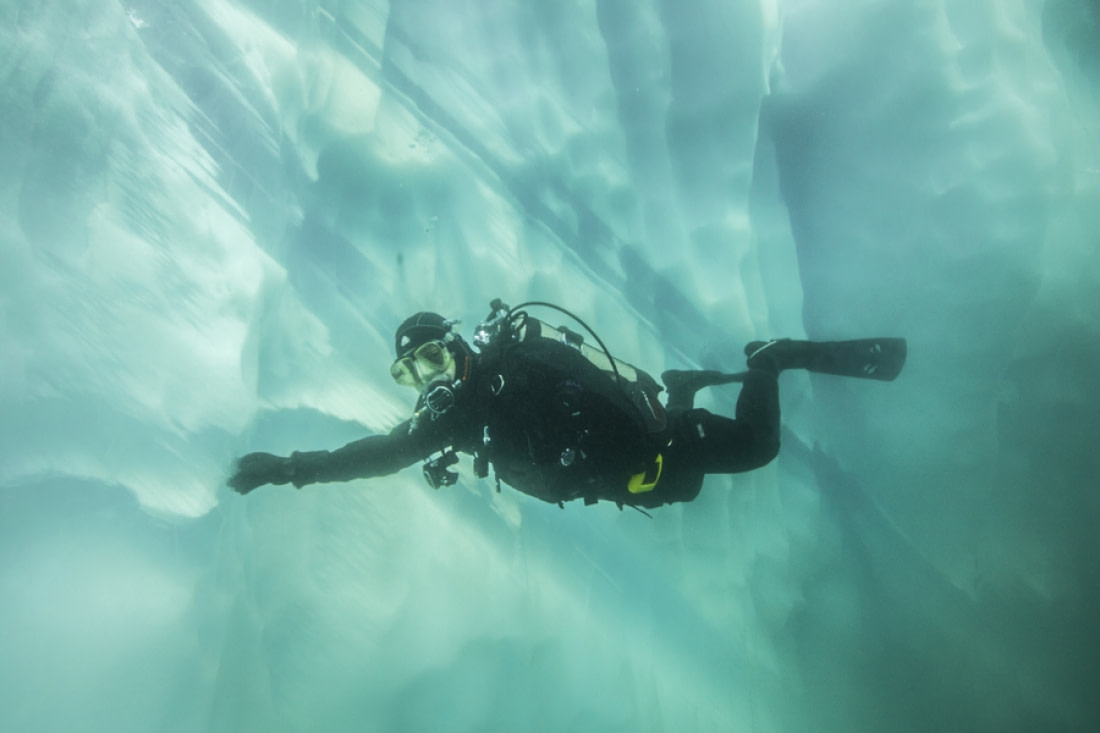
Equipment
Once you have settled into your cabin, you will be given an area to store and hang your equipment. Every diver is expected to prepare their own equipment in advance of each dive. Bring your own spare parts for regulators and dry suits in case of leaks or damage. Divers are expected to set up and carry their own equipment in and out of the Zodiac as well as up and down the gangway.
Number of dives
We plan for one to two dives per day, but an exact number of dives cannot be given due to the possibility of variable ice and weather conditions.
Visibility
Ample pack ice often means flat water with clear visibility. Little pack ice can mean plankton blooms, because there is more daylight and possibility of swells. But the ice and weather conditions are different every year, so there is no way to predict them.
DIVE EQUIPMENT
Please bring the following equipment yourself:
- Dry suit with hood
- Two sets of warm underwater garments
- Dry gloves or wet gloves/mitts adequate for sub-zero waters
- Two freeze-protected regulators. (We dive with special bottles that have two separate outlets, and we use 12L steel tanks fitted with a Y or H valve configuration and DIN or Yoke (INT) adaptable connections.)
- Stabilizing jacket or BC with quick-release capability and sufficient lift capacity
- Pressure gauge
- Compass watch
- Knife and torch
- Mask, fins, and snorkel
Dry suits
These are the only adequate protection in Arctic and Antarctic waters, which can be as cold as –1°C (30°F). The type of dry suit you use is not important so long as it fits you, is waterproof, and you are comfortable using it.
Neoprene dry suits have the benefit of good stretch and extra insulation. Shell suits provide no extra insulation but are lighter and dry quicker. They serve only to keep you dry and require extra layers of garments under the suit. If possible, bring a small dry suit repair kit.
Dry suit accessories
If a hood is not attached to your dry suit, you will need to bring one. A 7mm neoprene hood with face and neck seal is recommended.
Regular 7mm neoprene semi-dry gloves or mitts may also be used with any dry suit and are relatively easy to use. Three-finger mitts are warmer than five-finger gloves. You can also use special dry gloves that seal against rings on the arm of the dry suit.
To prevent glove squeeze and promote warmth, short pieces of surgical tubing or straws can be inserted under your wrist seals to allow air exchange between your suit and gloves. This type of glove requires additional practice, as they can fall off if not used correctly.
Face masks
We recommend a standard mask, but the type of mask you use is not critical. You may use a full-face mask if you are experienced with them. Commercial defogging agents work well for polar diving.
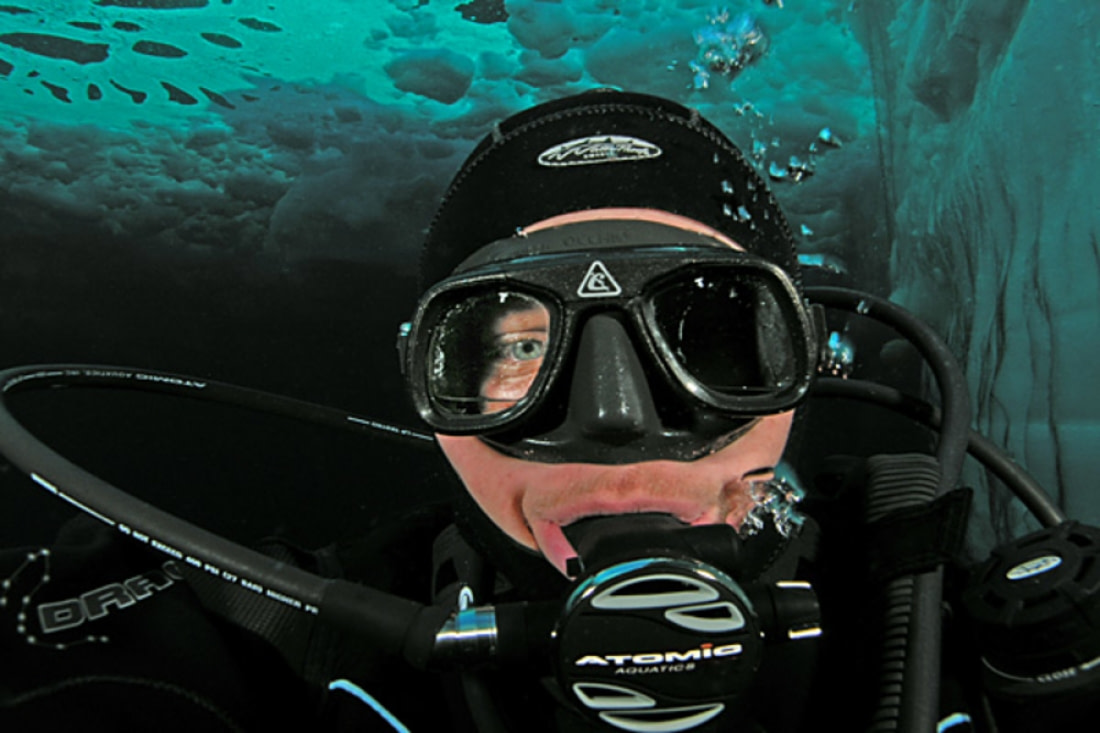
Please keep an extra face mask handy in case your regulator free flows. Straps can also become brittle in cold weather, so we highly recommend bringing a spare strap and mask.
Insulating undergarments
The colder the water, the more (and thicker) layers of undergarments are required. We recommend you wear two or three layers, depending on your suit.
As the first layer, you should wear a set of polypropylene liners. This material helps absorb moisture from the body. As the second layer, wear thick insulating material like fleece, synthetic pile, Thinsulate, or similar. As the final outer layer, we suggest a windproof shell.
The one-piece jumpsuit style is the most common and comfortable configuration of dive wear. It is available in a variety of thicknesses, depending on your dry suit and the water temperature.
Post-dive clothing
It is important to bring a warm hat and warm waterproof gloves to wear before, and especially after, your dives.
Regulators
Normal regulators will not function where we dive, since both the first and second stage could freeze. You are therefore required to bring two sets of regulators (first and second stage) suitable for cold-water diving.
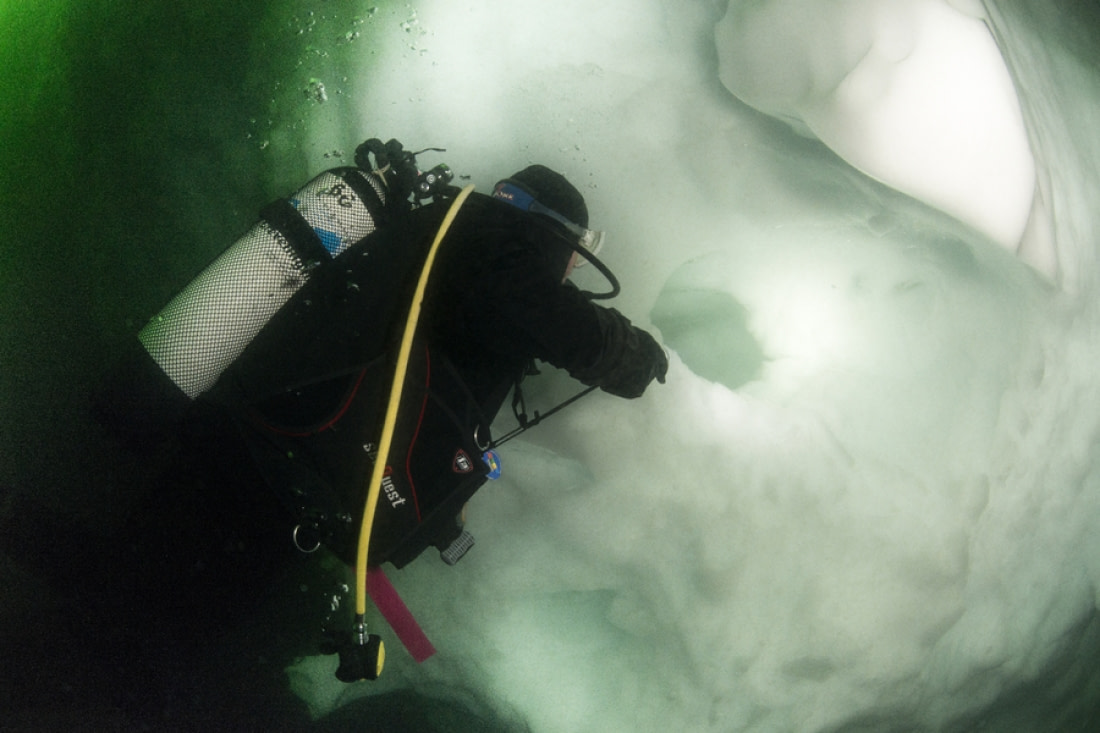
Some regulators can be fitted with an environmental seal kit, while others come environmentally sealed from the manufacturer. To avoid regulator malfunction, regulators must be cared for properly before, during, and after dives.
Avoid breathing from the regulator before submersion, except to briefly ensure it is functioning. When doing so, exhale after removing the regulator from your mouth to avoid freezing the second stage with moisture from your breath.
If your primary regulator freezes and causes a free-flow, switch to your back-up regulator and turn off the valve to the primary regulator. We avoid rinsing regulators with fresh water between dives to minimize the risk of freezing. We rinse all equipment at the end of the trip.
You will need the two sets of regulators described below:
First set, including:
- Freeze-protected first stage and second stage (including hose)
- Hose for BC
- Submersible pressure gauge (SPG)
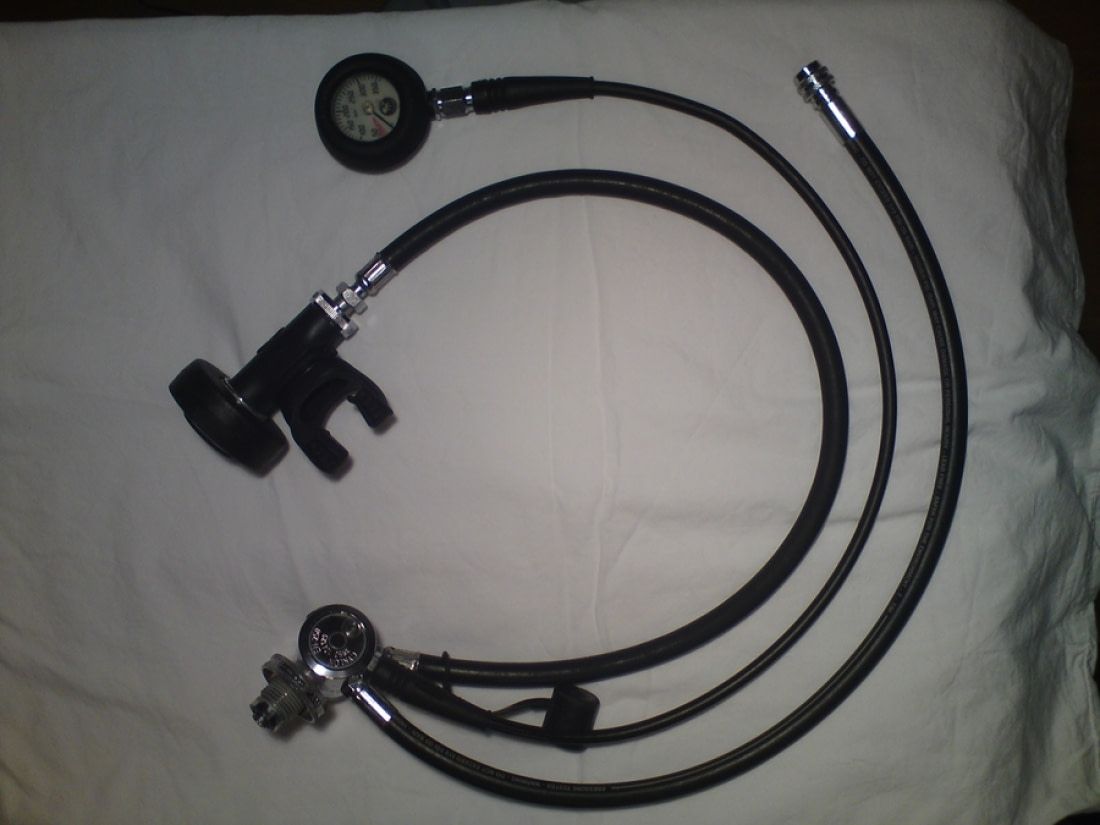
Second set, including:
- Freeze-protected first stage and second stage (including hose)
- Hose for dry suit
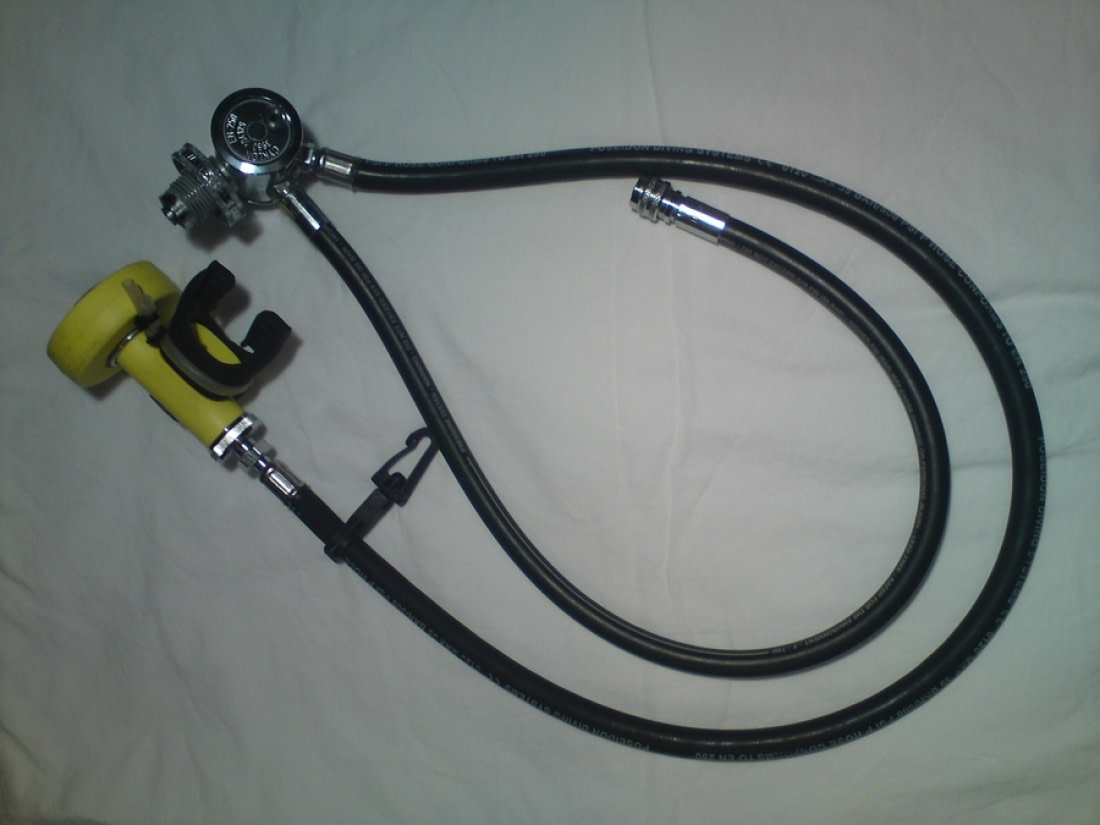
Tips to keep regulators free of water
- Always open the cylinder valve briefly to blow out any moisture before mounting the regulator from the orifice.
- When purging the regulator for removal, hold the second stage lower than the first stage so that water cannot drip back to the first stage after the pressure has dropped.
- Remove the regulator carefully to keep ice and water from falling into the filter.
- Dry the dust cap thoroughly before attaching it to the regulator.
- Fit the dust cap snugly before rinsing the regulator.
- Do not press the purge button while rinsing the regulator.
- Shake excess water from the second stage before hanging the regulator to dry.
Equipment we provide on board
Tanks
On all diving vessels, we have a compressor and 35 steel tanks of 12 liters each (200 bar), with DIN and Yoke adaptable connections and two separate outlets.
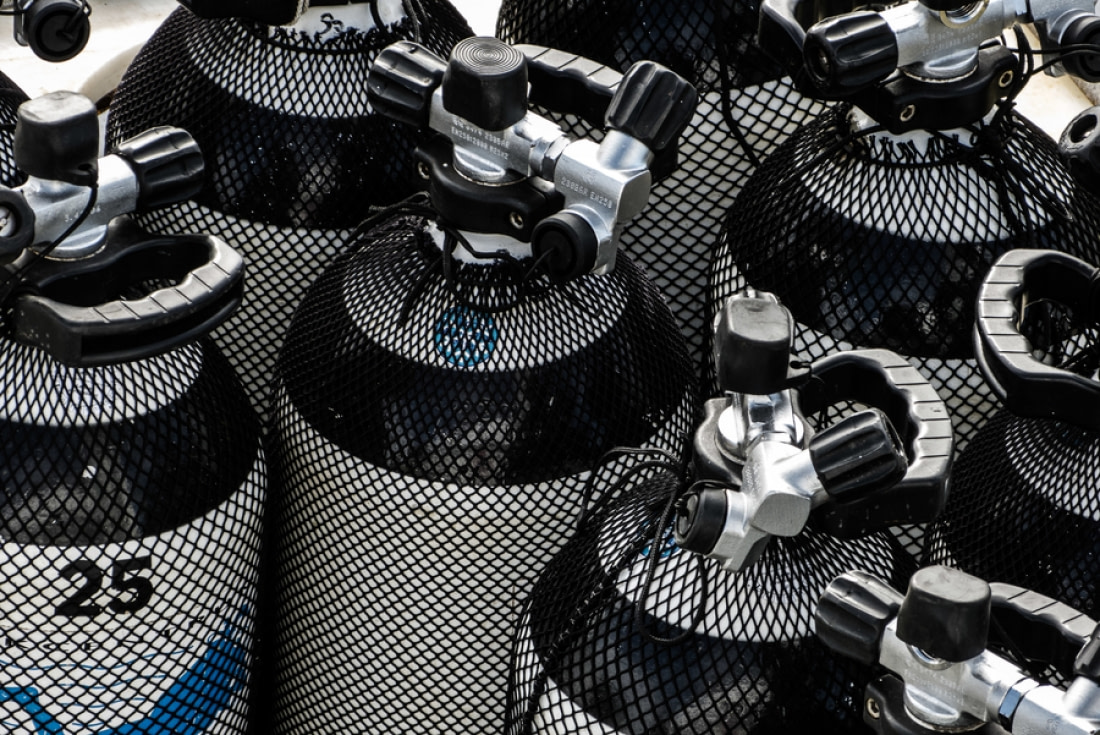
Weights
You will be provided with hard lead weights and a belt, but there are no ankle weights available. You may bring and use your own weight harness.
Your voyage apart from diving
Diving in Antarctica and the Arctic is a fantastic adventure, but our usual land outings are alsoamazing. With the prior approval of your expedition leader, you can choose to participate in our thrilling shore excursions and Zodiac cruises instead of diving. This combination characterizes the uniqueness of our voyages, which will give you the ultimate polar experience.
Our Zodiacs can take you safely into beautiful fjords, among pack ice, and to shore sites. We usually organize one morning excursion and one after lunch. The duration of excursions may vary, but they normally take three to four hours.
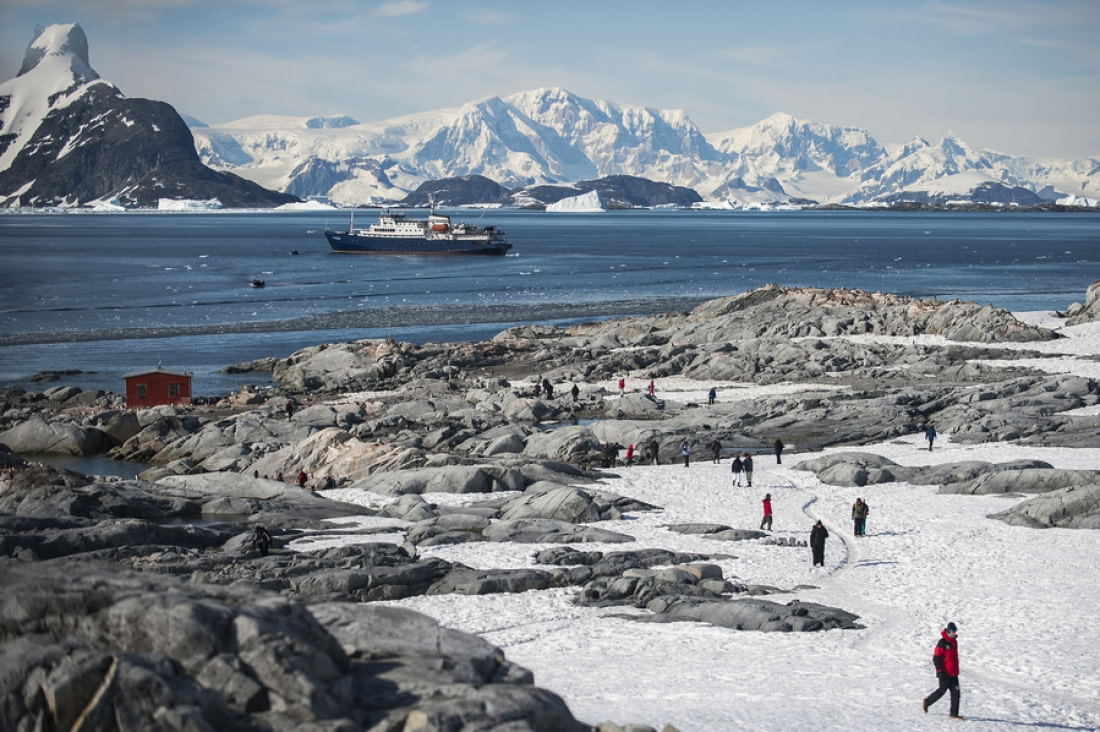
While you are on land, it is important to follow the instructions of our guides. It is not allowed to leave the group. In the Arctic, for example, we must take polar bear danger seriously. Polar bears are naturally camouflaged, so they can show up anywhere and attack without warning.
We also cannot touch, remove, or take or anything else from the environment or its monuments. This includes plants, stones, feathers, or anything else.
Disturbing the animals is also highly forbidden. Some birds nest on the ground, so be careful where you walk, and do not approach nests. When a bird’s nest is disturbed, it is extremely vulnerable to predators looking for eggs and chicks.
Diving FAQ & final notes
How deep do we dive?
Our maximum depth is 20 meters (65 feet). Many dive sites have slopes or faces that go deeper than this, so divers must act responsibly and show self-discipline.
What is the average visibility?
Ample pack ice often means flat water and clear visibility, while little pack ice can mean plankton blooms due to additional daylight and swells. But ice and weather conditions are different every year, making visibility unpredictable.
What about currents and drift dives?
Currents are specifically mentioned at some of the sites where they may pose a problem. Currents could be present anywhere, at any time. We always check the current before diving. We do not do drift dives. Drifting pack ice makes this too hazardous. If ice arrives while divers are underwater, it can be hard to see them if they surface among it. We only dive near icebergs that are hard aground or floating in water clear of brash ice or pack ice.
Do I need a full-face mask?
This is up to you and based on whether you are used to diving with a full mask.
What type of gloves should I bring?
Use a minimum of 7mm wetsuit gloves, otherwise we recommend dry suit gloves.
Why do I need two regulators?
We dive with two separate outlets (DIN and Yoke connection), so in case of a free flow (freezing) of one of your regulators, you have the second regulator as a back-up.
Can I have one regulator with DIN valves and the other with ISO?
Yes, we have adapters on board that we can put in the valve to connect with an ISO regulator. The DIN connection will fit without the adapter.
Do I need a waterproof bag to carry my smaller items?
It is good to bring a waterproof bag to use while preparing your dive equipment on deck. In the Zodiac, it is best not to bring more than your necessary dive equipment.
What is the water temperature in the polar regions?
Around freezing or slightly below.
Final notes
- Polar diving is an equipment-intensive activity, and ice diving in particular requires extensive equipment due to the cold and remote locations. Divers in cold water may have higher air consumption, expend more energy, and become fatigued easier. Cold water also decreases your ability to perform complex manual tasks.
- The snorkel is a vital part of your safety equipment and will often be used when diving with seals and other wildlife.
- Do not bring any new equipment you have not tested in the water. The polar regions are not the place to test new equipment. Please make sure you have done at least four or five dives with your equipment. This will allow you to fine-tune your buoyancy, trim characteristics, and take note of how much weight you need when diving.
- Contact your airline about luggage restrictions and request a special allowance for your dive equipment prior to departure. All excess baggage is at your own expense.
- Divers are expected to prepare their own equipment in advance of each dive and take care of it afterward. Bring spare parts for your regulators and dry suit in case of leaks or damage.
- We do not have rentals on board. Please make sure you check out all your dive gear before leaving. Bins are available for storage.
- Keep in mind while packing dive gear that you will need to carry your own equipment in and out of the Zodiac for filling and logistical changes.
- Please get travel insurance! Participation in an expedition cruise is 100% at your own risk. In our travel documentation (specifically our personal information form for scuba diving), all passengers need to sign a liability statement in which they agree that Oceanwide Expeditions and dive staff are exempt from responsibility for personal injury and property damage, including loss of items. Oceanwide cannot accept any liability claims.
